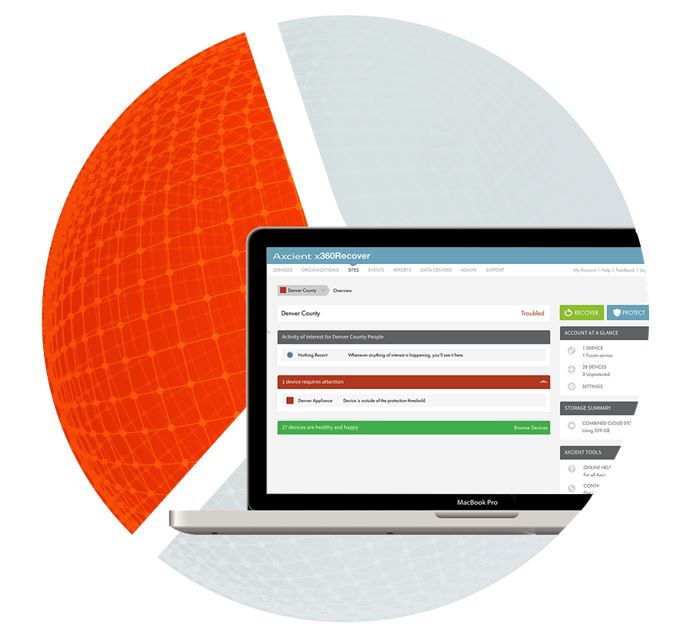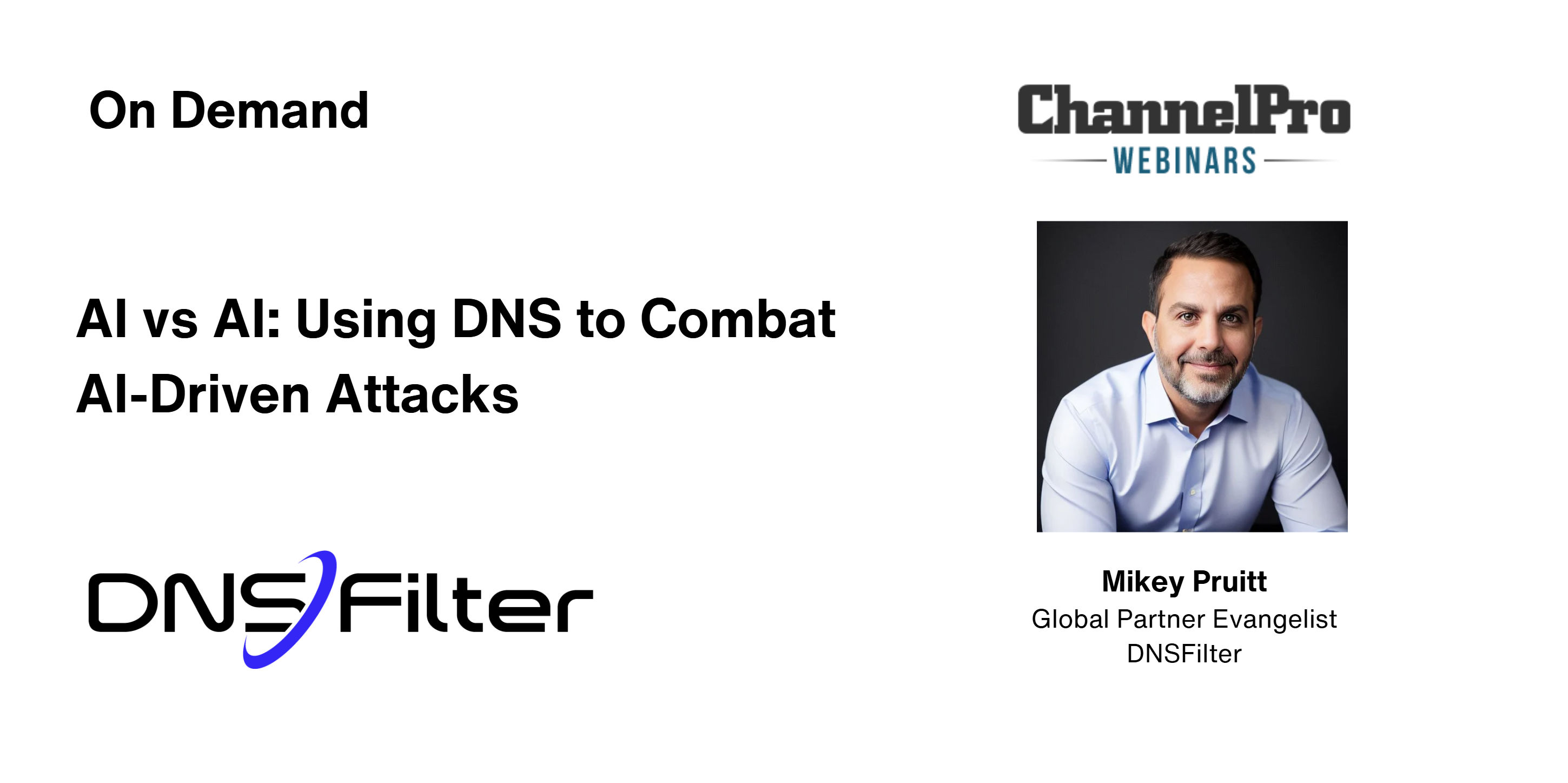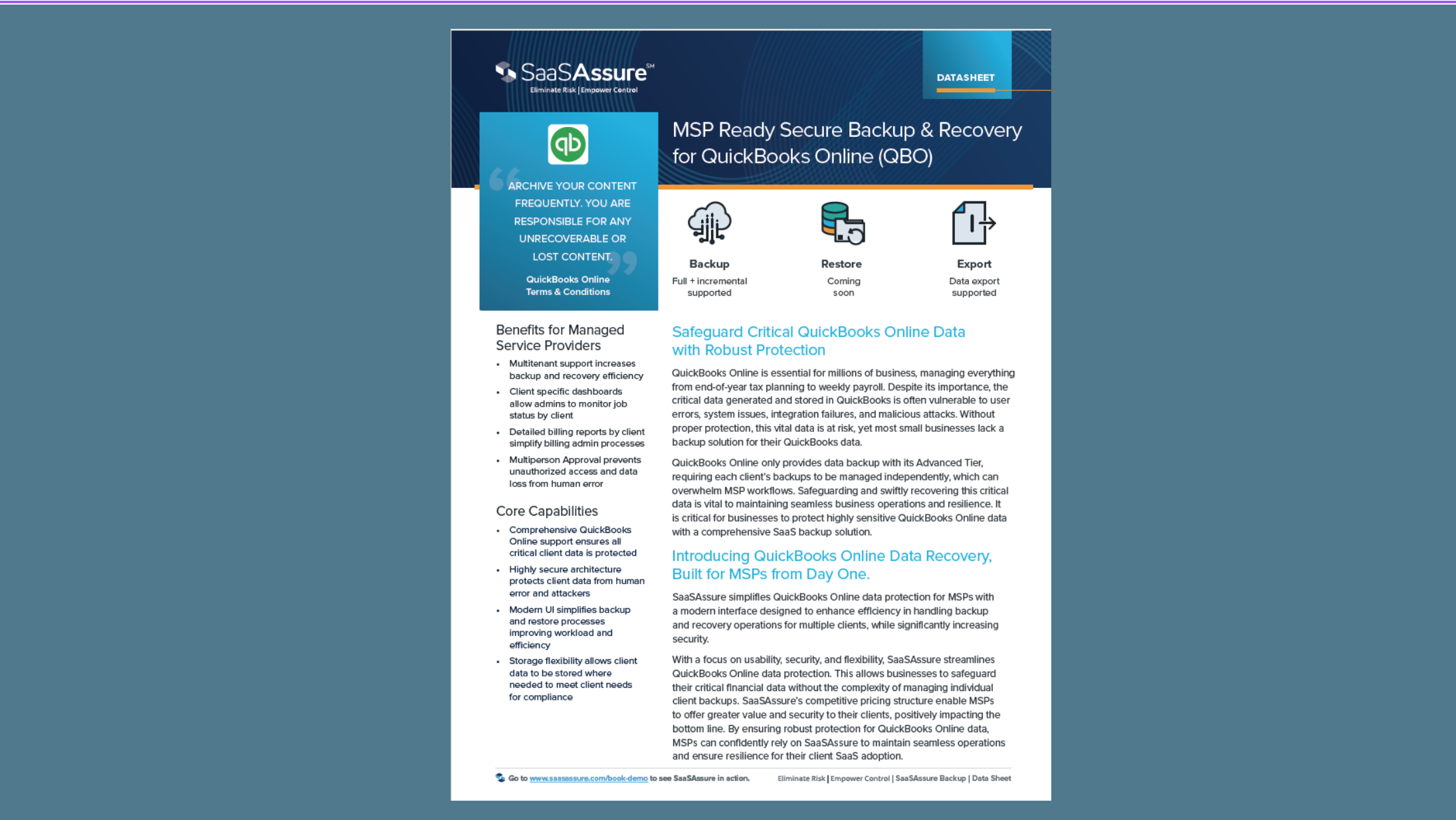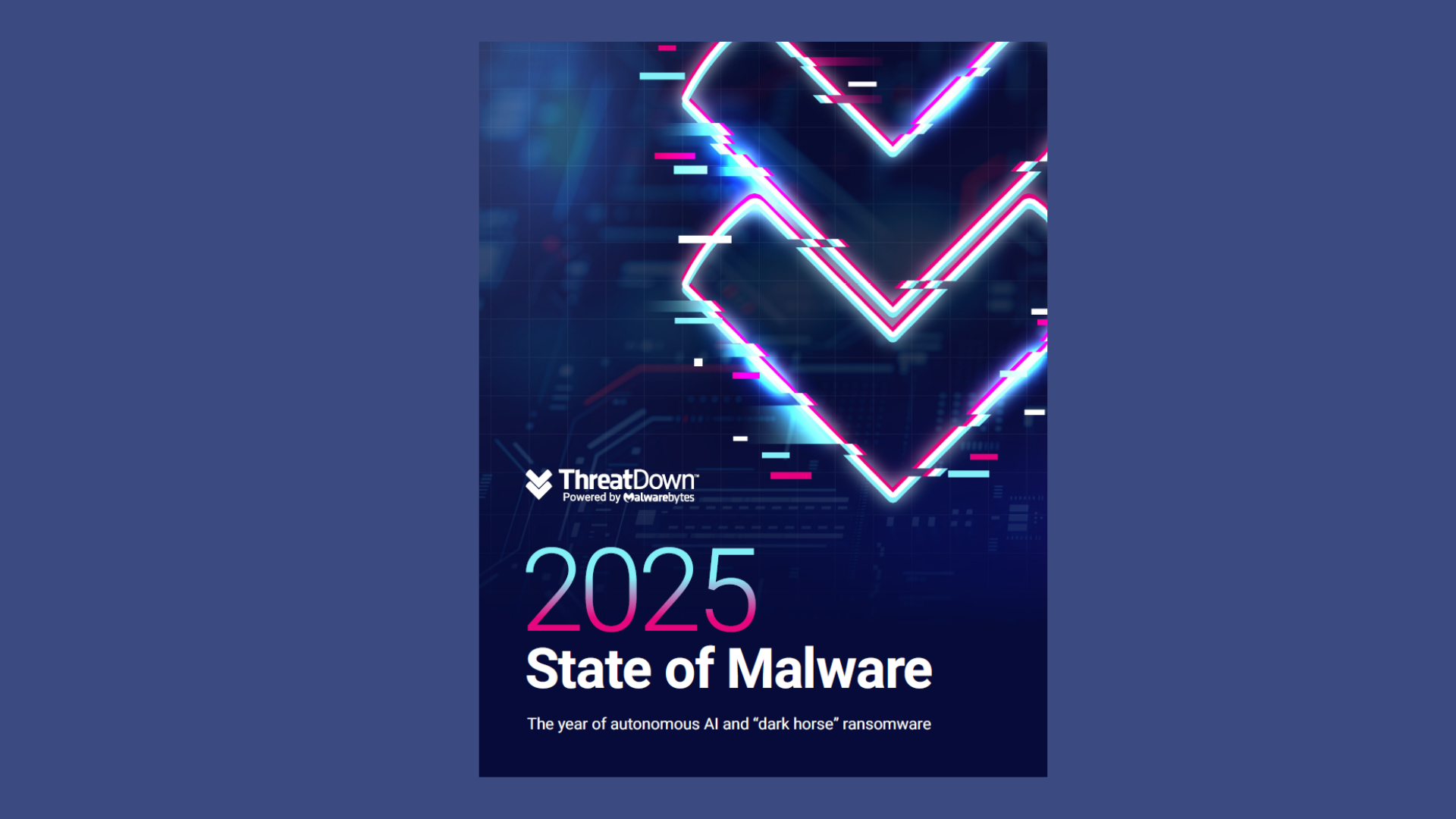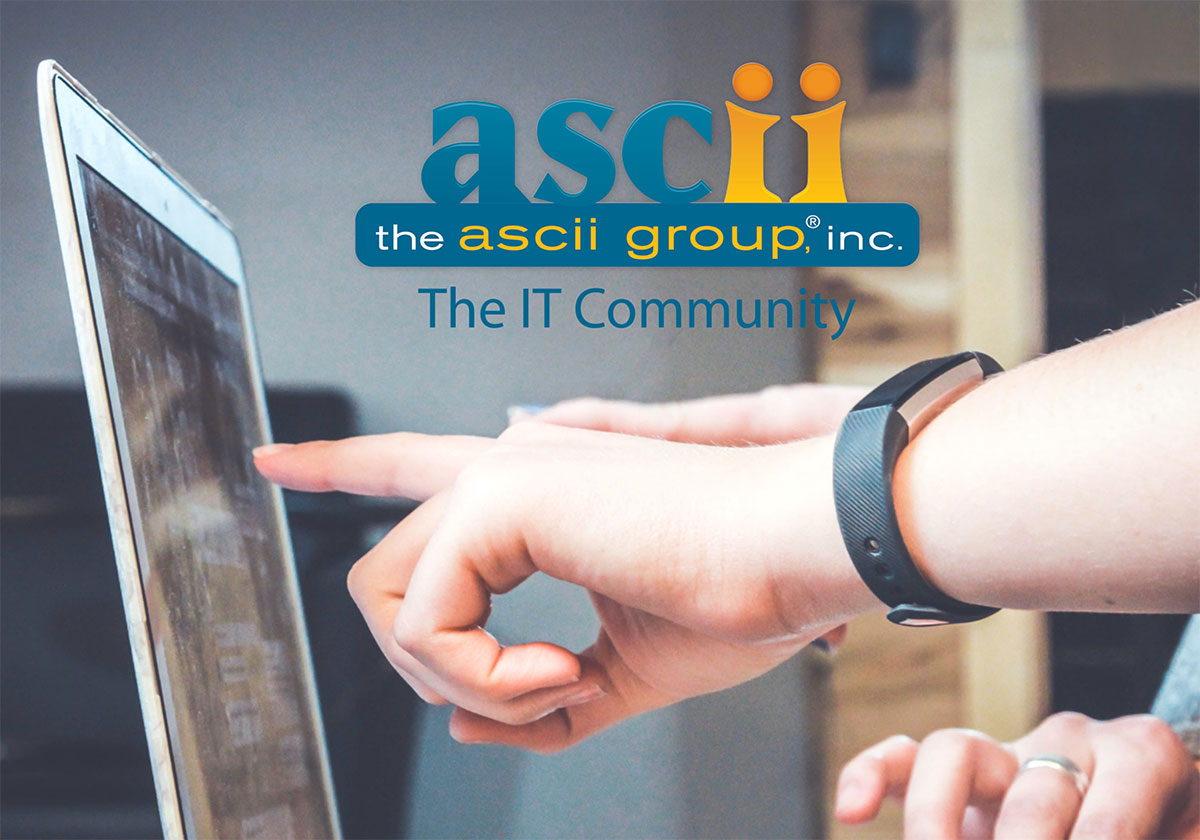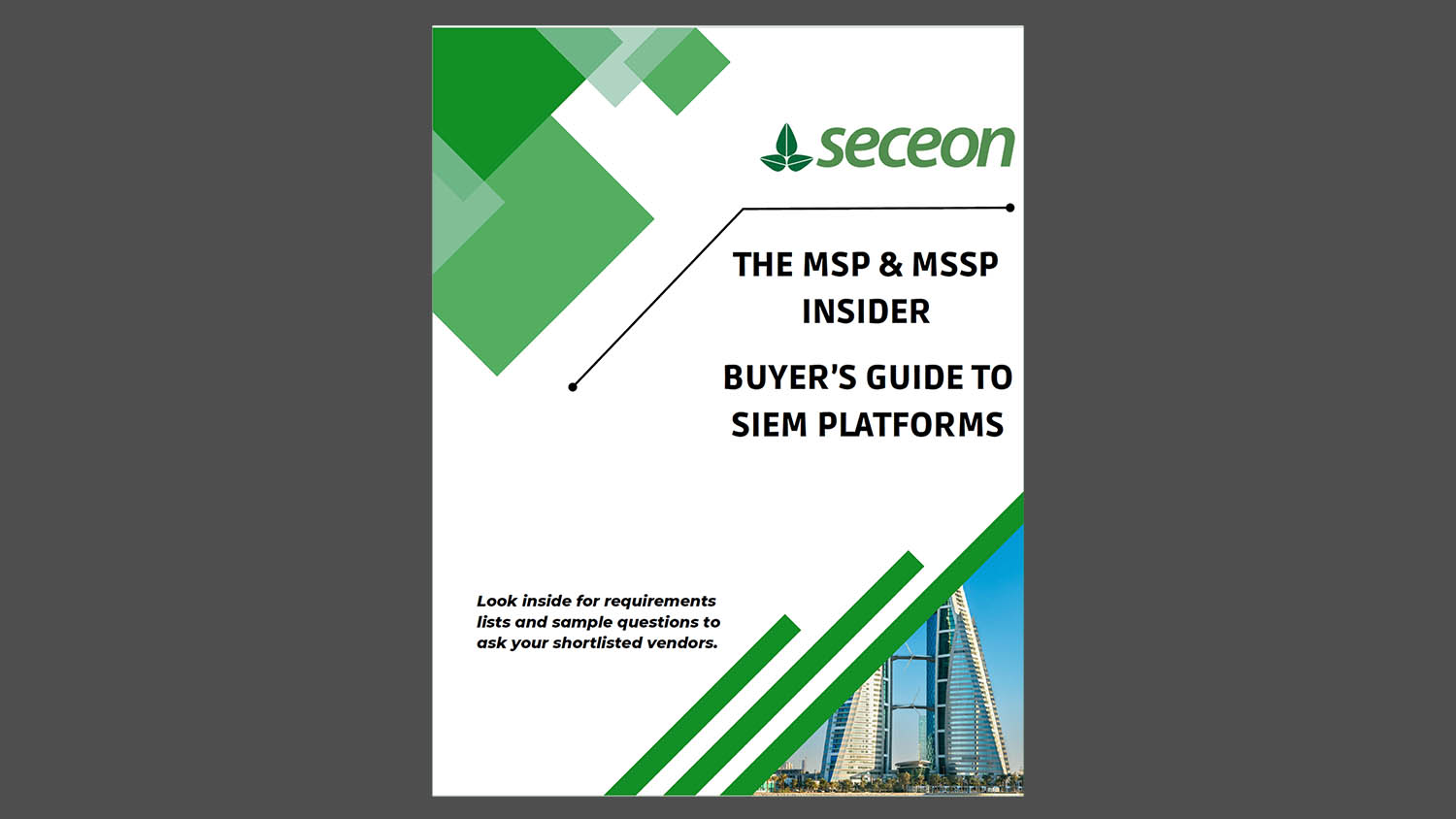Axcient has combined its three BDR products together into a single solution called x360Recover.
The new offering, which closes the last major gap in the business availability software maker’s next-generation x360 platform, also marks a significant milestone in a journey of strategic consolidation and redefinition that began three years ago when data protection vendor eFolder and disaster recovery-as-a-service specialist Axcient merged with assistance from private equity firm K1 Capital Management. The combined firms adopted the Axcient name in 2018.
x360Recover brings Axcient’s previously stand-alone Replibit, BRC, and Fusion solutions together into a single BDR service designed to be greater than the sum of its parts.
“This is just not gluing things together,” says Kevin Hoffman, Axcient’s CTO. “It’s an actual new thing that doesn’t leave anyone behind but brings the best of those three previous products into one new product.”
With the launch of x360Recover, Replibit, BRC, and Fusion are no longer available as separate offerings. When existing users of those systems log in, they will find all of the functionality they utilized before plus additional features not previously available to them, according to Axcient CEO David Bennett.
“Whatever you had, you keep,” he says. “You’re also getting access to all of the other things across all of the technologies.” Users pay the same subscription fee they were charged for x360Recover’s constituent products previously, he continues, so those added capabilities come at no extra cost.
The new solution also replaces separate, application-specific administration interfaces with a new, fully-integrated console. “They’re all managed in one place using consistent policies for SLA-based alerting and reporting and health and so forth,” Hoffman says. MSPs who use multiple BDR systems to meet varying client needs, he adds, crave the operational efficiency that a unified platform with a standardized management plane makes possible.
“What we’ve heard from partners is that they want something that’s easy to manage, low labor, inexpensive so they can deploy it to all of their clients, and [that] covers all of their use cases,” Hoffman says.
Combining Replibit, BRC, and Fusion in a single package, Axcient argues, allows users to enjoy those products’ complementary strengths. For example, BRC’s “virtual office” feature, which lets organizations mirror disk images both on a local appliance and in the cloud, shortens recovery time objectives to less than an hour, the vendor says, while Replibit’s “chain-free” snapshot technique shrinks recovery point objectives to as little as 15 minutes.
“No snapshot is dependent on any other snapshot,” says Angus Robertson, Axcient’s Chief Revenue Officer. “It’s fully independent, fully bootable, fully recoverable, so if you have any bad data, you can just delete that data and sync the delta as opposed to [performing] a whole other backup.”
According to Hoffman, combining the three BDR solutions into one compensates for their individual weaknesses as well. Replibit, for example, is a relatively trouble-free system to use, he says. “But the cloud recovery experience has been difficult for people.” BRC, on the other hand, is the exact opposite. “You’ve got slower backups, but then you’ve got a really nice, easy recovery cloud experience,” Hoffman notes. x360, he continues, is designed to retain Replibit’s manageability and combine it with BRC’s cloud recovery capabilities.
x360Recover also comes with AirGap, a technology Axcient unveiled in March that ensures only legitimate requests to delete or alter backup data are executed, and gives MSPs extra time in which to recover erased or corrupted backups even after damage has been done.
Introduced last fall, x360 pulls together the entire collection of products Axcient has been assembling ever since data protection vendor eFolder began a string of acquisitions that included file sync and share vendor Anchor in 2013 and Replibit in 2016. The platform currently includes three components: x360Cloud, which encompasses Axcient’s CloudFinder product and handles cloud-to-cloud backup; x360Sync, which incorporates Anchor’s software; and now x360Recover. All three systems share a common user interface and billing engine, as well as access to the partner marketing portal Axcient launched last summer.
“This has been three years in the making,” observes Hoffman, who credits K1 for its support during that process.
“So many private equity firms or investors, when you go and do acquisitions, there’s not the patience to actually do the integration of the disparate products,” he says. “We’re grateful we’ve got patient investors who understand the vision of what we’re doing, and so we’ve been able to incrementally deliver value on these three products over the last three years but also actually integrate them to one product.”
K1 provided advice and capital as well, adds Hoffman, noting that Axcient’s development team is some 40% larger than it was when the creation of x360 began.
Though adding BDR to x360 rounds out the platform’s core capabilities, Axcient plans to expand it further in the months ahead. The company is presently working on cross-solution search functionality, for example, that will allow users to hunt for data in backups, file shares, and other repositories through a single query, as well as cross-solution status reporting.
Also in the works is a new direct-to-cloud backup technology scheduled to arrive later this year. According to Hoffman, the system will include functionality unavailable at present elsewhere. “That’s going to be something that is not only net new to us, but nobody else in the street can do today in terms of what direct-to-cloud actually means,” he says.
In a further milestone for Axcient on its path to unification, the company also introduced a redesigned website today built around the company’s new “protect everything” messaging.




